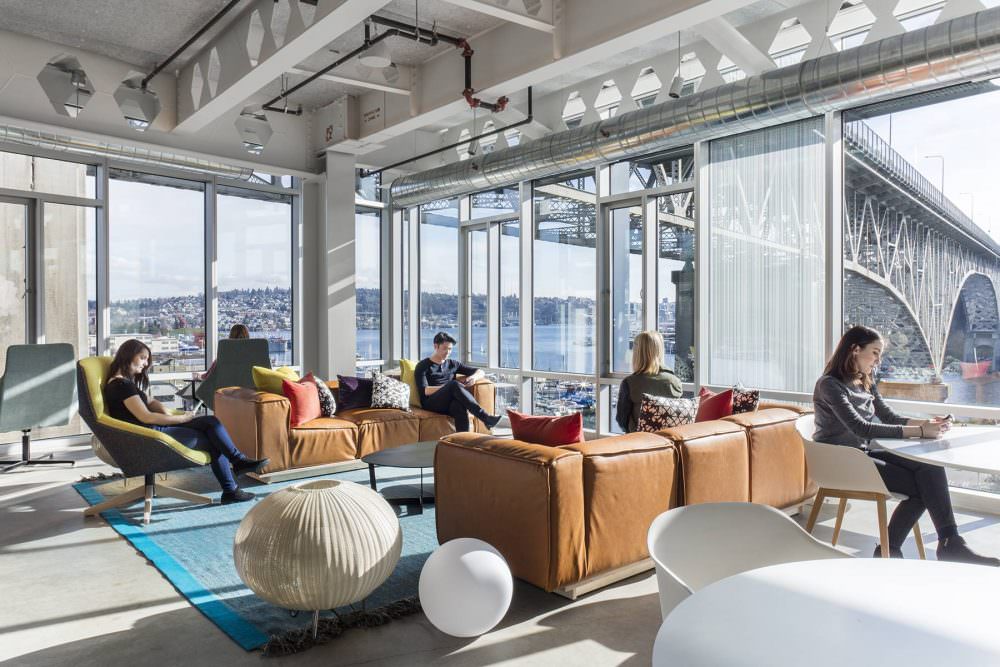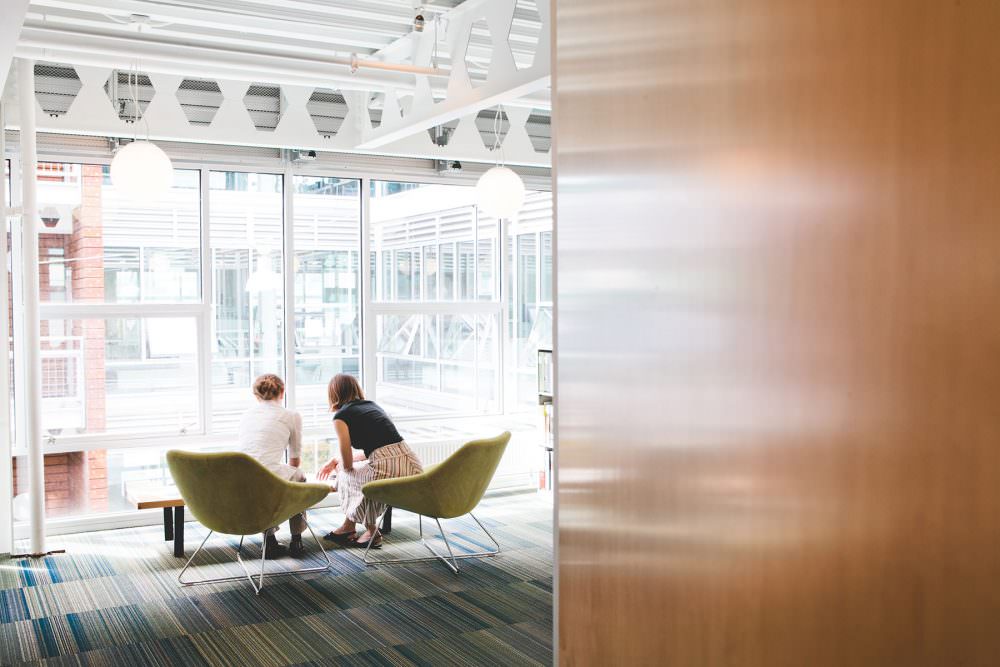Originally written by former WT Senior Associate, Rachael Bauer.
While I have proven my passion for designing for those with physical disabilities with the creation of the residential multi-family targeted “Rachael Shower Pan”, I also believe there are strategies to expand accessible design outside the home to the next place we spend most of our time (if not more than our own residence) – the office.
Office design (and commercial design in general for that matter) significantly transformed when society finally recognized the need to accommodate those with physical disabilities with the Americans with Disabilities Act (ADA), which became law in 1990 but was officially effective in 2009. Building codes ensure these requirements are enforced, but we often associate accessibility requirements with physical impairment, even though the ADA Amendments Act of 2008 (ADAAA) now includes people with psychiatric disabilities. Therefore the office design of the future should specifically address those impacted by all forms of disabilities, including those employees with mental illness.
The latest SAMHSA (Substance Abuse and Mental Health Services Administration) report from 2012 found that 20% of American adults experience mental illness in a given year [1]. This equates to 1 in 5 adults. This can be anything from anxiety or OCD to depression or ADHD; some more severe than others.
Unfortunately, these terms have a negative connotation. Instead, employers should try to look at the associated positive traits and focus on how design can allow these employees to shine while also providing benefits toward mental health for all employees. For example, an individual with a diagnosis of Obsessive Compulsive Disorder may have significant attention to detail [2], while an individual who is challenged with depression may have a deeper capacity for feeling and expressing empathy [3]. This might make them more suitable for particular jobs or tasks, but might also make them more sensitive to negative triggers in their environment. With such a substantial number of people addressing challenges related to living with a diagnosable mental illness, the design community needs to respond, just like it did for those with physical disabilities.
The impact to design should not be viewed as another code requirement focused towards those with mental illness, but rather follow more of a universal design approach to benefit all. It may not be known to employers whether their employees have a mental illness, nor are they able to disclose that information to designers if they do know. Therefore employers should look toward an office design that supports overall mental health.
Here are six design strategies to consider:

Daylighting at DATA 1 commercial office building in Fremont
1. Daylight and lighting
We all want to relate to the outdoors, whether we have a mental health challenge or not. But daylight is also known to be a key component to helping those coping with Seasonal Affective Disorder (SAD).
When daylight might not be available, LED lighting can also help as it feels more natural than the previously prevalent fluorescent office lighting. Furniture arrangement can also take advantage of views or simply make better use of daylight. Flexibility and ability to control lighting with dimmers or personal task lights and window treatments is also a benefit, as some workers are particularly sensitive to brightness and intensity of light.
2. Air quality
Poor indoor air quality can contribute to respiratory problems, which not only impacts physical health as we have learned, but also general mental health and more specifically, depression [4]. Air quality decreases with highly densified cities trending toward more heavily populated office space.

The Terry Thomas Building has operable windows and an exterior staircase to connect its occupants with the outdoors.
3. Greenery
Who doesn’t like a bit of greenery? While it’s obvious that plants and flowers can brighten any interior space, research shows that greenery increases cognitive performance in the workplace and results in a more positive psychological state [5]. Additionally, it helps preserve air quality, which is also linked to mental health as noted above.
4. Acoustics
We all know noise affects productivity, but those with mental illnesses can be particularly bothered by it. There are many articles and studies that recommend various solutions including altered furniture layouts, the addition of more collaborative workspaces, acoustical treatments, use of headphones, etc. [6].

Interior of The Terry Thomas
5. Density
Today’s workplace is denser than ever before, especially with the rising costs of real estate in the city. While an employer might seek to squeeze more employees into less space, workers still want to maintain their bubble, particularly someone who suffers from anxiety. This person tends to perceive threats as closer than others [7]. Similarly, density can negatively impact those that are hypersensitive to sound. Too little personal space can be disruptive and jeopardize productivity.
6. Sensory
While appealing to all the senses is important, visual sensory can greatly impact mental health. Designers must find the perfect balance between a design that’s visually stimulating and one that’s overdone. Too much of the same neutral color or the same pattern or texture can become boring, but something too bold can be bothersome or distracting to someone with a mental illness resulting in reduced productivity.
There is nothing more appealing to a potential employee than seeing that an employer cares about the wellbeing of their staff, which includes their mental health. As stated above, we know that an employer is required by code to provide a level of accessibility to accommodate physical disabilities, but for an employer to provide a universal design to benefit those with various mental illnesses will attract employees and help employers retain them. Could this become the next criteria for workplace design? We think it might.